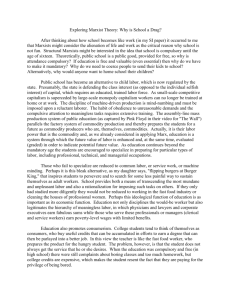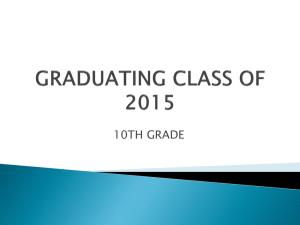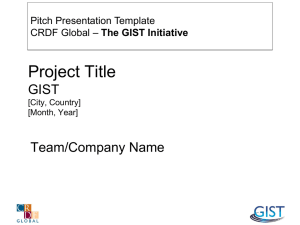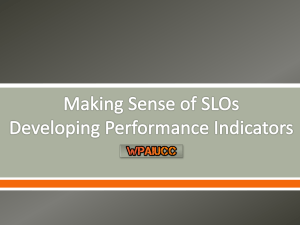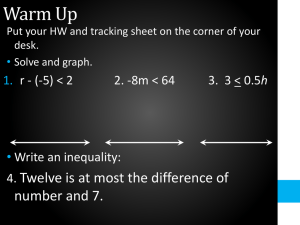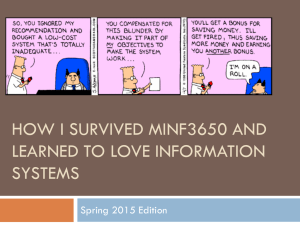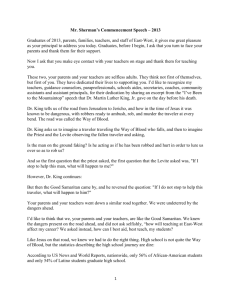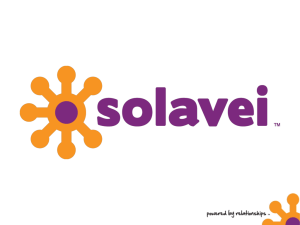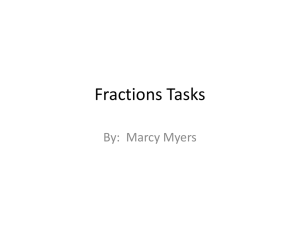Credit Recovery - ronwilliamson.com
advertisement
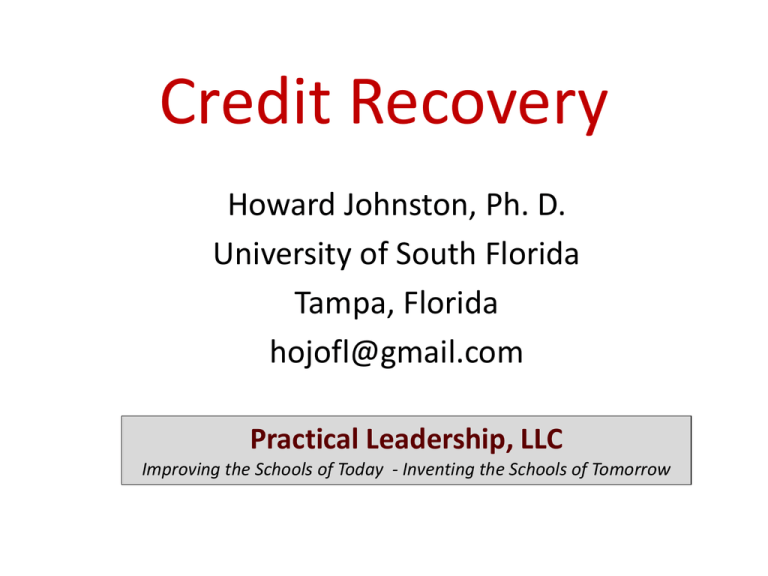
Credit Recovery Howard Johnston, Ph. D. University of South Florida Tampa, Florida hojofl@gmail.com Practical Leadership, LLC Improving the Schools of Today - Inventing the Schools of Tomorrow What’s the Problem? • • • • • • • • Every day in the US, 7000 kids drop out 12 million will drop out in the next decade Dropouts earn $19,540 a year; grads $27,380 Net economic loss in US: $1.5 trillion In PA, 80% graduate; range is 41% - 98% African American grad rate is 57% in US Hispanic grad rate is 58% in US > 50% of inmates are dropouts Why Are They Leaving School? • Absence of family support • Becoming a parent • Missing too many days of school • Failing too many courses • Uninteresting classes • Personal problems: mental illness, drugs, etc. What to Look For If a sixth grader in a high poverty school… • attends school less than 80 percent of the time, • fails math or English, or • receives an unsatisfactory behavior grade in a core course, …there is a 75 percent chance he or she will drop out of high school. --Robert Balfanz, Johns Hopkins Credit Recovery: a structured means for students to earn missed credit in order to graduate Fully online $ Face-to-face $$$$$ Does it Work? Definitely Yes! Definitely No! Definitely Maybe! Lots of opinion and anecdotal evidence; little conclusive research or evaluation data Questions and Issues • Little data on rigor or effectiveness of program. • Do students move at own pace, or slide out? • How long should a class take? • How are credits recorded? Is it fair? • Is there equal access – especially online? • Is it just about the money? (Online courses are much cheaper than hiring a teacher.) Who Benefits Most? • Youth with adult responsibilities such as caring for family or paid employment • Youth involved with the criminal justice system • Older immigrant youth/English language learners • Youth with learning disabilities or emotional or behavioral issues (with support) • Youth aging out of the foster care system • Youth who move regularly from one school to another • Teen mothers Less Successful Candidates • Students who are poorly motivated to earn a diploma • People with serious, untreated behavioral or mental health issues • People who lack enough self-discipline for self-paced learning (and do not have a supervisor, mentor, or coach available) • Seriously skill-deficient students Features of Successful Programs • • • • • • • • • Required to offer CR courses by state or LEA Well-publicized; well-regarded by public Wide-spread availability across state or district Stable finances – Start-up funds are crucial Courses aligned with state standards & tests Courses self-paced and competency-based High quality instruction and accountability Clear program completion expectations Options for unsuccessful CR students It’s the Attitude, Stupid! YOURS • • • • Respected by school staff Endorsed by district Promoted in the community Not just about drop-out prevention; it’s preparation for work or post-sec ed • First class citizenship for participants • Policy environment doesn’t create snags THEIRS • Willingness to take responsibility for their situation • Motivation to graduate • Clear educational aspirations • Respect for the process (Don’t game the system.) • Acceptance of accountability • Willing to ask for help Key Decisions • • • • • • • • Who is eligible? What criteria will we use? Who will staff it? OR uses “accredited” people. Locally produced or purchased from a vendor? Do we have a “credit by proficiency” infrastructure in place? Can we build one? How is it funded? Source of start-up money? What will we offer? How often? How long? Can we collaborate to save resources? What happens to unsuccessful students? Learn to Earn -- Idaho Learn to Earn in Hayden is a cooperative apprenticeship program between Habitat for Humanity of North Idaho and Post Falls High School. Students earn school credits for their volunteer construction work. The students gain hands-on experience on the Habitat job site, and make useful contacts in the construction community. Learn to Earn offers students a way to get the credits necessary for a high school diploma, while teaching them valuable skills in construction from foundation to finish work. Learn to Earn -- Philadelphia Prep Zone is an innovative high school afterschool program that offers students the opportunity to earn credit during afterschool time for substantial projects that apply classroom learning to real-world situations. The program includes rigorous coursework, development of an entrepreneurial project and business plan, and culminates in levels of competitions where the students can win grants and computers. A Comprehensive Approach EVOLUTIONS (EVOking Learning & Understanding Through Investigations of the Natural Sciences), is a free program at the Yale Peabody Museum of Natural History in New Haven serving underrepresented, inner city older youth. Students earn academic credit at their schools for participating in a program revolving around science career awareness/literacy, college preparation and transferable skills development. Students design and construct their own museum exhibition and produce DVDs that teach science to elementary students. They also go on a 2-3 day college visitation trip and visit another museum in the region, all free of charge. Students become paid, trained interpreters of museum resources. New York, New York Young Adult Borough Centers (YABC) are evening academic programs designed for high school students who are behind because they have adult responsibilities that make attending school in the daytime difficult. Students graduate with a diploma from their home school after they have earned all of their credits and passed all of the required exams while attending the YABC. YABCs also offer Learning to Work -additional academic and student support, post-secondary and career exploration, work preparation and skills development. Many include the Learning to Work internship component, where students gain valuable work experience and earn money at the same time. A Passion to Learn Hallways to Learning in Kewanee, Illinois used the results of a student survey to design their program. Students indicated what their interests and goals were, and they now have the opportunity to participate in a cardio club, a jazz ensemble, a writing club, culture club, film club and book club. Woven throughout the curriculum is a credit retrieval program that helps students graduate with their peers. California Dreamin’ BlairLEARNS Program located at Blair High School (grades 7-12) in Pasadena, California combines a unique mix of enrichment, interestbased clubs and sports with no-nonsense academic supports, including credit recovery. While students may be initially attracted to the cutting-edge enrichment programming such as digital media, performing arts and culinary arts, a large percentage of participants take advantage of the afterschool credit-recovery classes. Rollin’ on the River Al Kennedy HS in Cottage Grove, OR provides a completely community-based learning program where students earn HS credits for real-world projects: a community garden that supplies a food bank, environmental and water conservation, a sustainable housing development (with Habitat for Humanity), and even a boatbuilding contest culminating in a cruise on the Willamette River. After School, When’s That? Practical Leadership Materials from this session are available at: http://ronwilliamson.com/Practical_Leadership.html
